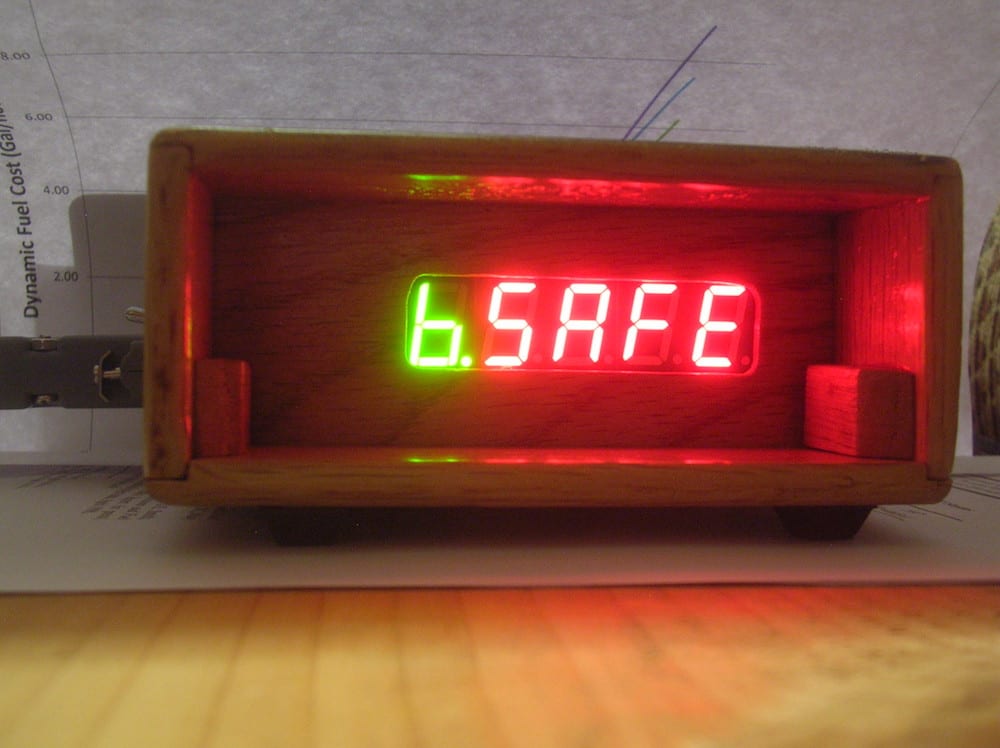ValueGauge presents a paradigm shift in vehicle fuel measurement and driver behavior. ValueGauge enables operators to drive in ways that yield the most Value for their time.
The traditional measure of vehicle fuel consumption is miles per gallon (MPG). Every automobile sold in the US for the last 40+ years has a window sticker displaying the mileage results of standardized tests of “Urban” and “Highway” driving. Many drivers have failed to achieve the posted results The incorporation of digital electronics led to the introduction of live displays of instantaneous and average fuel mileage; however the instantaneous mileage can range in a typical automobile from zero to 99.9 mpg, making such a display confusing at best.
I searched for a measure that would be more useful than MPG, one that would incorporate both the price of fuel and time of travel. I decided on a measure I call Dynamic Fuel Cost, or DFC, in units of dollars per hour. Mathematically, DFC is the ratio of the change in cost of fuel in relation to the change of time of travel at any speed, or simply put, the cost of fuel in dollars per hour. I then worked out the math of DFC for steady speed, acceleration, deceleration by braking, and deceleration by coasting, and incorporated same in a microcomputer that connects to the vehicle electronics and a display for the operator, which I named ValueGauge.
Driving with ValueGauge yields some interesting and unexpected results. At steady speed, every vehicle has a certain steady speed that yields best mileage and a DFC of zero, which we call the “sweet spot”, typically 30 to 50 mph. At speeds below the sweet spot, mileage decreases; but such speeds are required because of traffic, pedestrians, congestion, etc. ValueGauge indicates a LOSS of both fuel and time, but the cost is typically a dollar or two per hour. At speeds above the sweet spot, fuel mileage decreases, increasing DFC to about $10/hour at 80 mph, clearly affordable for most working folk.
During acceleration, instantaneous mileage decreases dramatically, leading some to believe it must be wasteful; however ValueGauge reveals that the fuel to accelerate a vehicle does not depend on rate, only the final speed. Hence, accelerate quicker to save travel time and get more vehicles through the green.
The operation that WASTES fuel is braking; the kinetic energy is turned to heat, but travel time is reduced compared to coasting. However, ValueGauge reveals that coasting can SAVE fuel at a very significant dollar per hour DFC, many times the typical Minimum Wage, especially at higher speeds. For instance, by coasting to ½ of the steady travel speed, ¾ of the fuel to accelerate the vehicle can be utilized instead of wasted by braking. In addition, brake wear is reduced. Following the advice of ValueGauge, we anticipate that most drivers can save 10% or more on fuel in urban driving. We expect highway driving using ValueGauge can save 10% of driving time.
Like this entry?
-
About the Entrant
- Name:David B Smith
- Type of entry:individual
- Patent status:patented

